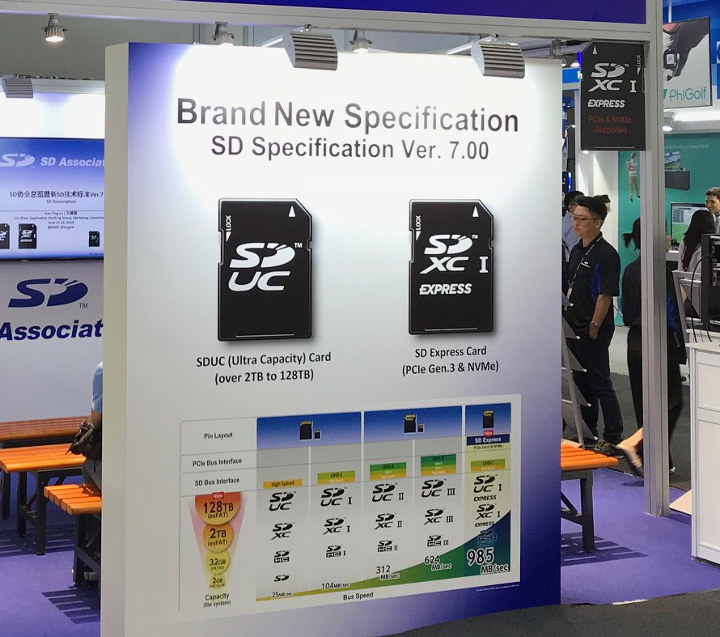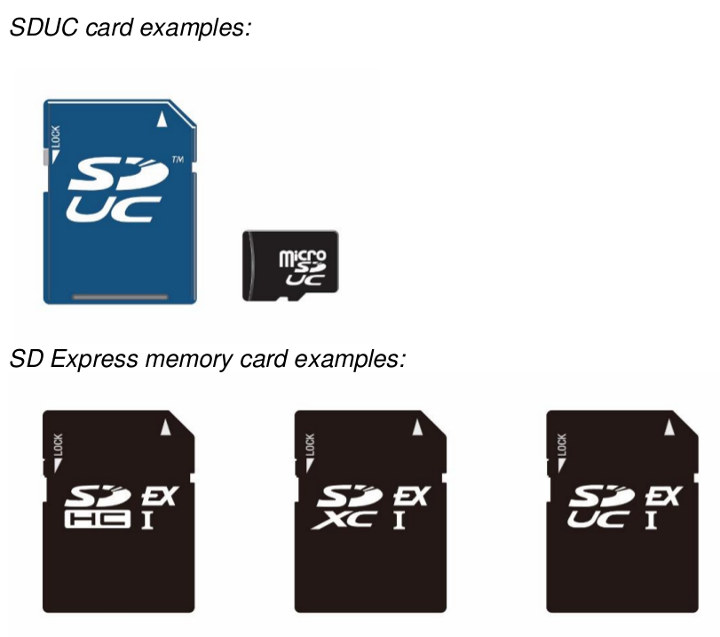SD cards are known for the convenience, portability, and relatively cheap prices, but not so much for their performance which can be pretty poor especially for the cheaper and lower capacity models, and when fast random I/O is needed.
The SD Association have been working on helping customer buy performant cards for their needs with – for instance – the app performance class introduced in SD 5.1 specification, which defines minimum random read and write speeds in Class A1 and Class A2 micro SD cards.
However, the association has gone a step further with SD Express found in SD specification 7.0 that adds PCIe and NVMe interfaces to the legacy SD card interface.

SD Express will enable theoretical data transfer rate up to 985 MB/s via PCIe 3.0, as well as advanced memory access mechanisms such as Bus Mastering, Multi Queue (without locking mechanism) and Host Memory Buffer thanks to support for NVMe 1.3 protocol.
The SD 7.0 specification also introduced the new SDUC (SD Ultra Capacity) card allowing capacity of up to 128 TB, instead of the 2TB possible using SDXC cards.
The PCI Express and NVM Express signals will be located on the second row of pins used by UHS-II cards. Such SD Express cards will act as removable SSDs, and will be clearly marked with “EX” symbol.

The new SD Express card are expected to be used in demanding applications such as data-intense wireless communication, super-slow motion video, RAW continuous burst mode and 8K video capture and playback, 360 degree cameras/videos, gaming systems, multi-channel IoT devices and automotive applications among others.

Jean-Luc started CNX Software in 2010 as a part-time endeavor, before quitting his job as a software engineering manager, and starting to write daily news, and reviews full time later in 2011.
Support CNX Software! Donate via cryptocurrencies, become a Patron on Patreon, or purchase goods on Amazon or Aliexpress




